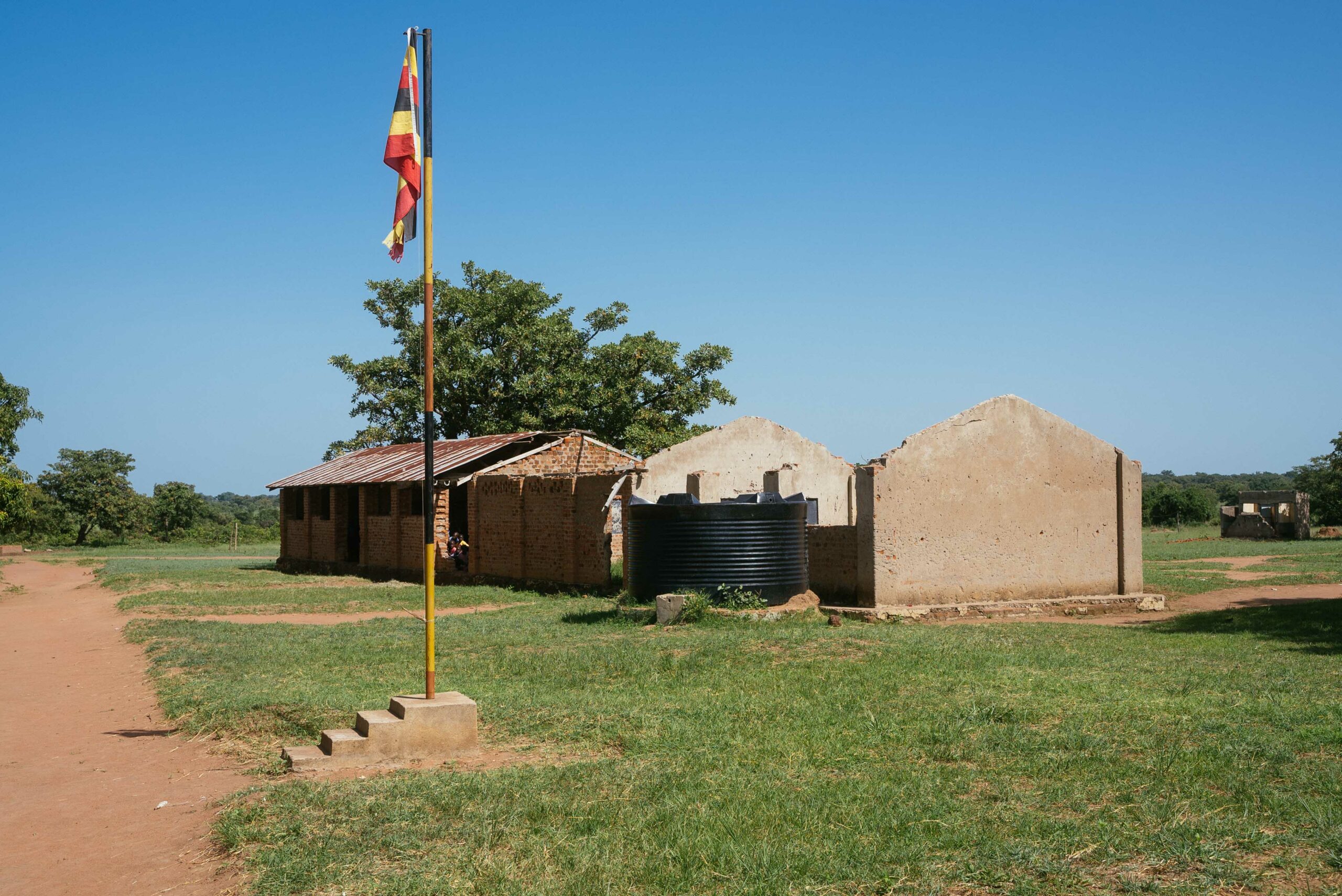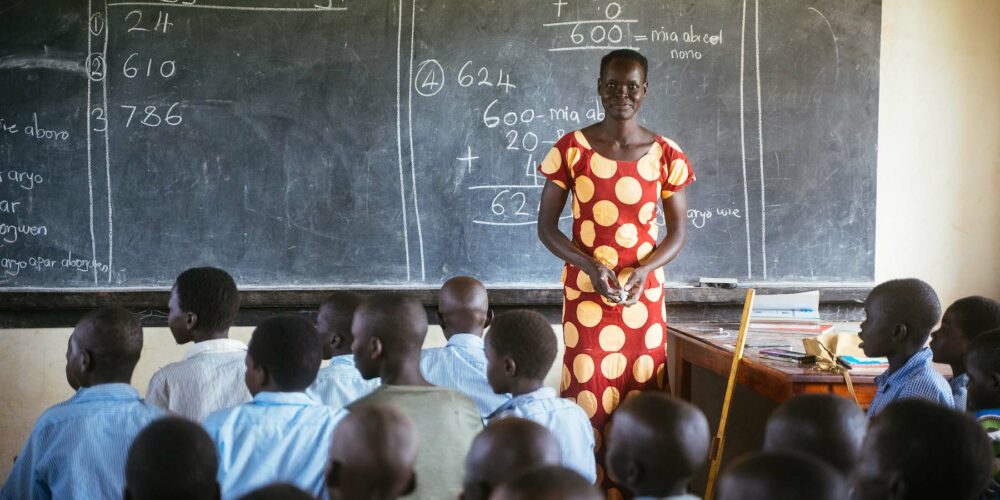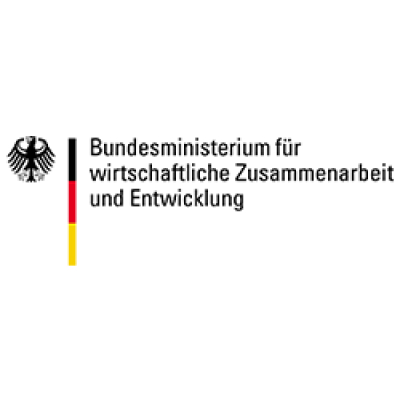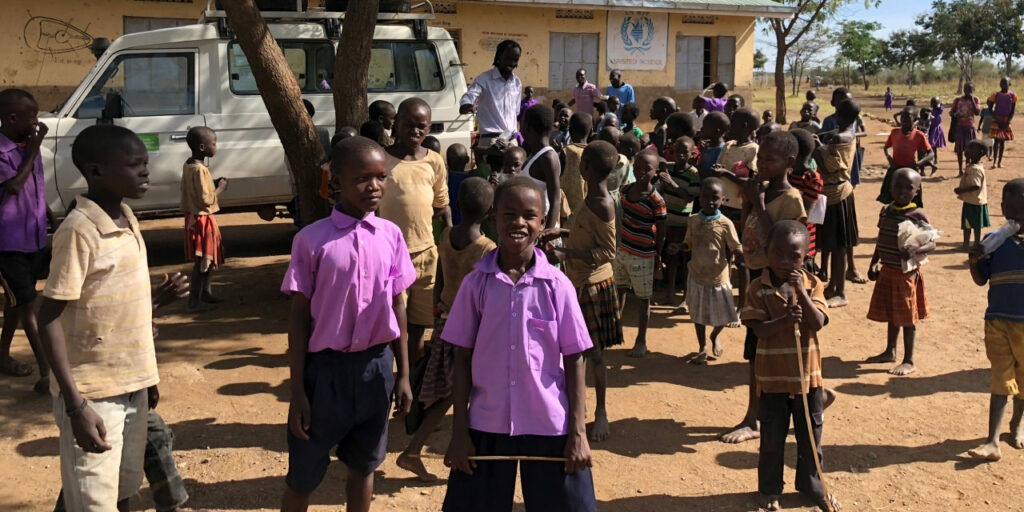
Kaloi Primary School
Completed
The Karamoja region in north-eastern Uganda is characterized by unpredictable weather with long periods of drought and short periods of heavy rainfall. The weather conditions deprive the predominantly semi-nomadic population of their income. Migration and high levels of poverty are the result. Kaloi Primary School also suffers from these conditions. Most of the school buildings are in danger of collapsing and are far from sufficient for the approximately 400 children. There was also a lack of sleeping facilities due to the long distances to school and a lack of hygienic sanitary facilities. Together with Welthungerhilfe and Viva con Agua, we planned the construction of toilets, washrooms and a water supply. The renovation of the classrooms and the construction of dormitories were also on the agenda.
INITIAL SITUATION
Kaloi Primary School is located in Karamoja, a region in north-eastern Uganda that is arid and less developed in terms of infrastructure than the rest of the country. Rainfall in Karamoja is irregular and unpredictable, which is probably due to climate change. The region is threatened by desertification due to the long periods of drought and the erosion of the earth. People are leaving the area due to crop failures and the lack of alternative sources of income. The population in the region consists largely of semi-nomadic people who live from cattle farming in the savannah. Due to the often difficult climatic conditions for agriculture, the poverty rate is very high. For a long time, the population attached very little importance to basic education. The illiteracy rate is 80% – which is very high compared to the national average of 32%.
With almost 400 pupils, Kaloi Primary School is part of a growing counter-movement in which the desire for education is steadily increasing. The school is located in the savannah, about 10 km from the nearest small town, in an area with swelling clay soil that swells when it rains and shrinks when it dries. If no reinforcement is provided for the foundations, settlement cracks quickly occur in the masonry, endangering the building fabric. State funding for schools is very limited and in the case of new classrooms, the contract is often awarded to unqualified companies who want to make a quick buck and save on building quality. For these reasons, the Kaloi School also struggles with poor teaching conditions due to a lack of or dilapidated infrastructure.

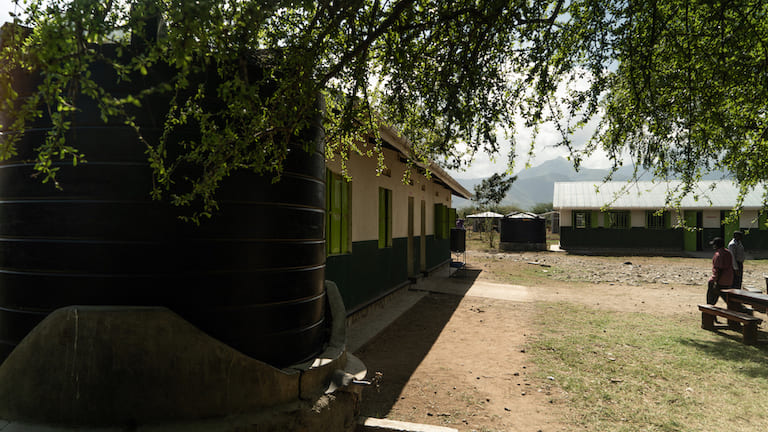
PROBLEM DEFINITION
The elementary school in Kaloi was opened back in 1984 and in 2019 already had around 187 female and 209 male pupils aged between five and 14 as well as 15 teachers. Most of the children come from villages close to the school, but some walk long distances to school, often barefoot.
At the time of our inventory at the end of 2018, the school had five classrooms, each with two classrooms, some of which were used as dormitories for teachers and pupils and as administration rooms and had significant structural defects. There was also a great shortage of classrooms, so that sometimes two classes had lessons in one room at the same time. Due to a lack of sleeping facilities at the school, many students in the higher grades dropped out. This mainly affects girls who help out in the household or are affected by early pregnancies and marriages when the distances to school are disproportionately long and dangerous. The school’s sanitary facilities were also in a state of collapse and unsanitary. The lack of washrooms and water supply was also an obstacle to school attendance, especially for girls during their menstruation.
Learning success often failed to materialize at this school, the drop-out rate of students was extremely high, teachers threatened to leave and the health restrictions reduced the motivation of the remaining students and teachers.
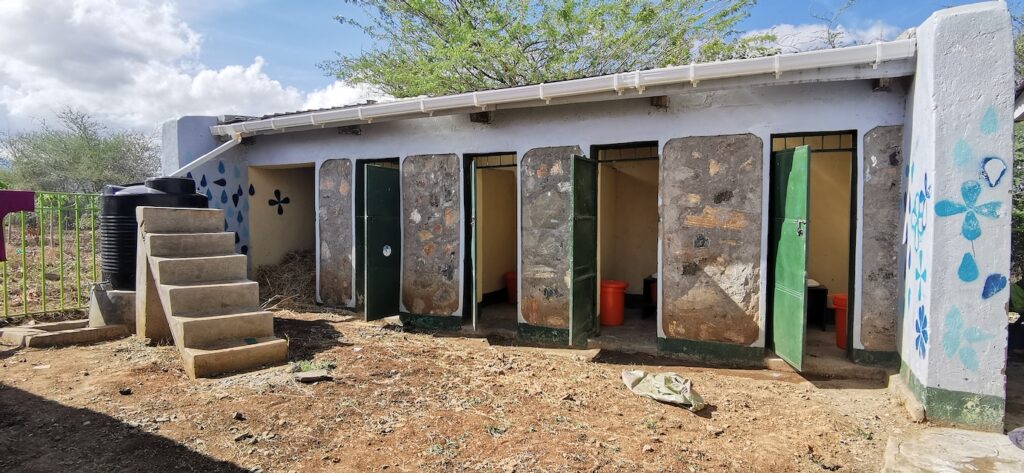

Our solution
During our visit in October 2018, we were surprised with a very warm welcome ceremony organized by parents and the school staff. On the initiative of a group of parents, campaigns have already been launched to convince other parents of the importance of school education. This also gave rise to a dedicated parent-teacher committee, whose commitment made a lasting impression on us and convinced us to support the school. This initiative showed us that we had the necessary basis to guarantee that infrastructural progress at the school would be accepted and used by the target group.
In cooperation with Welthungerhilfe and Viva con Agua, we wanted to meet the growing demand for education among the population and improve the teaching and learning conditions at the school in the long term. The aim was to replace all dilapidated buildings, create accommodation for pupils and provide sanitary facilities. We also planned to hold workshops on the topics of hygiene and building maintenance. This creates an integrative approach that directly promotes three of the Sustainable Development Goals (SDGs):
Promotion of quality learning (SDG No. 4)
Gender equality (SDG No. 5)
Access to safe drinking water and sanitation (SDG No. 6)
Our project started in March 2019 with the construction of gender-segregated dry composting toilets. The construction of washrooms for girls and boys also began. In 2020, we also repaired the existing cistern and established a rainwater collection system to supply the school with sufficient water. We would like to take this opportunity to thank Viva con Agua Sankt Pauli, who financed a large part of this first project phase. This was accompanied by several workshops organized by Viva con Agua Kampala, which educated the children and teachers about hygiene and health in a playful way in order to prevent health risks due to poor hygiene practices in the long term.
In addition, the construction of dormitories for girls and boys began in October 2019 to prevent pupils from further away from dropping out of school early. In January 2020, work also began on renovating the very dilapidated classrooms so that all pupils can once again be taught in an appropriate learning environment. All our construction projects are rounded off with workshops and the establishment of committees for the long-term preservation of the buildings. However, these can only take place once the COVID-19 contact restrictions are eased on site.
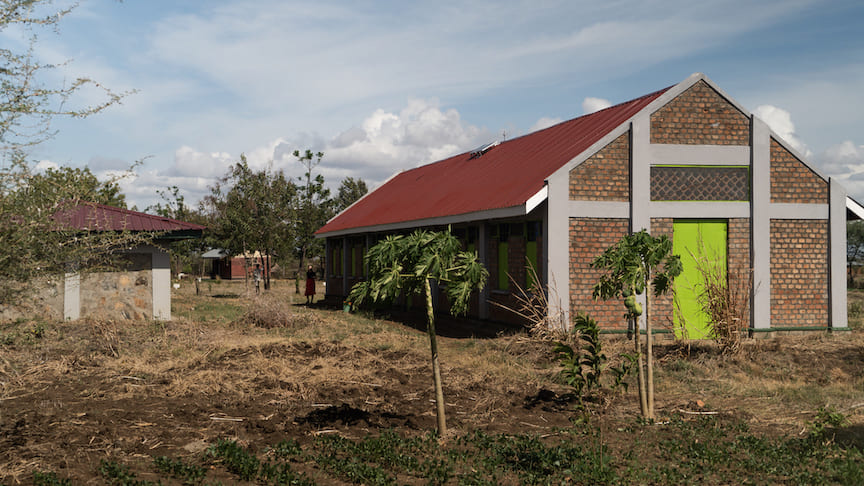
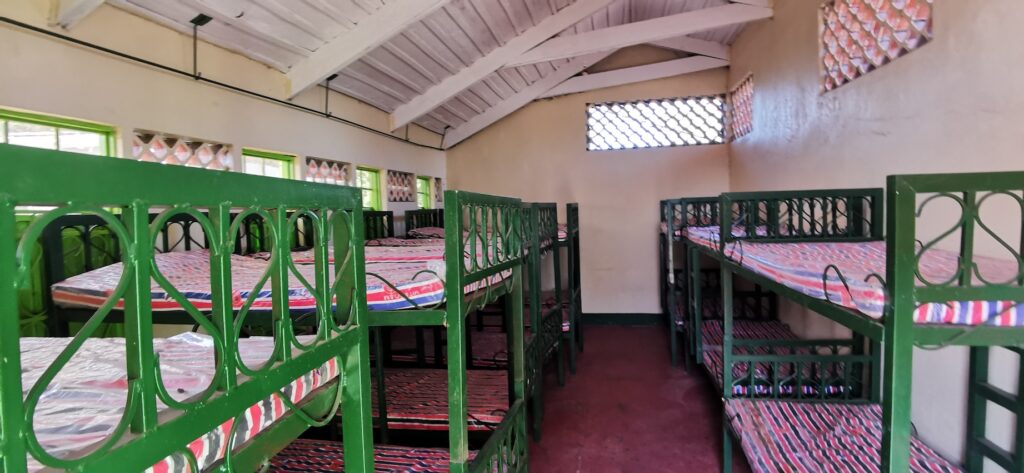
WHAT HAS BEEN ACHIEVED SO FAR
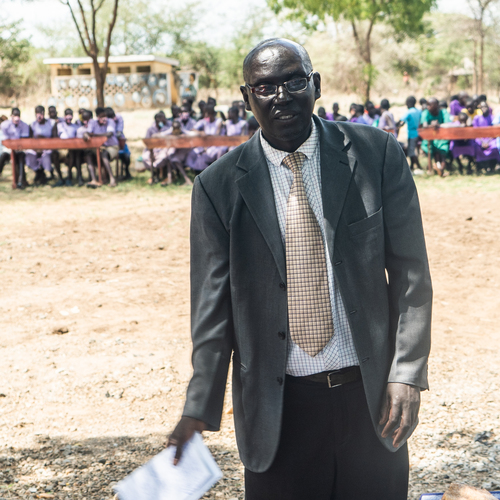
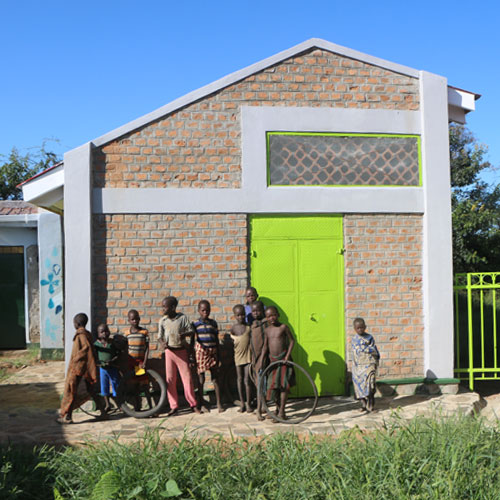
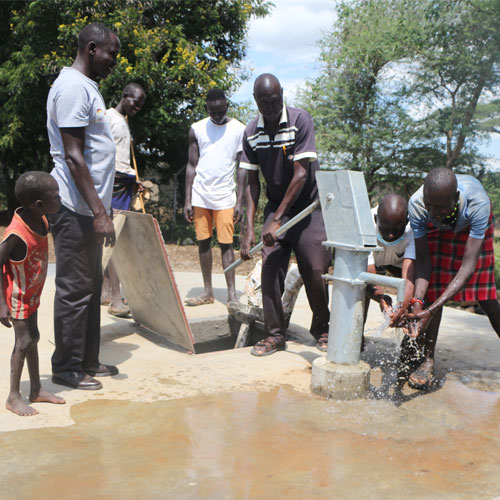

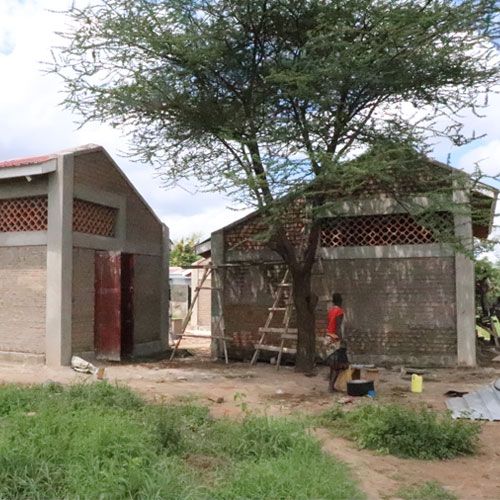





OPENING CEREMONY
During our stay in Uganda, we officially handed over the completed buildings together with the students during a festive opening ceremony.
COMPLETION OF THE BEDROOMS
After a few delivery delays due to the coronavirus regulations, the bedrooms were finally completed. Both buildings - those for girls and boys - were each equipped with 32 double-decker beds, mosquito nets and curtains.
SECURING THE WATER SUPPLY
The existing cistern and hand pump were repaired to ensure the supply of clean groundwater at the school. Important hygiene rules such as regular hand washing can now be observed.
COMPLETION OF THE CLASSROOMS
The refurbishment of the classrooms has been completed. As soon as the schools reopen, all pupils can now be taught in appropriate classrooms. The buildings were equipped with gutters and water tanks to collect rainwater.
CONSTRUCTION PROGRESS DURING A GLOBAL PANDEMIC
The COVID-19 pandemic does not stop at northern Uganda. The schools are closed, but fortunately construction can go ahead thanks to special permits. There will only be some delays in delivery.
START OF THE CLASSROOM RENOVATION
The renovation of the very dilapidated classrooms begins. So that lessons can once again take place in an appropriate learning environment for all pupils.
START OF THE CONSTRUCTION OF DORMITORIES
Construction of the dormitories for girls and boys begins. These are intended to prevent pupils from further afield from dropping out of school early.
NEW WASHROOMS FOR GIRLS AND BOYS
Small wash houses were built for girls and boys, which will later be attached to the dormitories. These washing facilities are particularly important for schoolgirls so that they can also attend school during their period.
PROJECT JOURNEY
On our project trip, we got to know the school even better this time. In addition to games and craft activities, we conducted surveys with the children, teachers and parents for a long-term evaluation of the project's success. We also held discussions with girls on the topic of menstruation and worked with parents to find solutions for financing their children's school attendance.
START OF THE FIRST PROJECT PHASE: GENDER-SEGREGATED TOILETS AND WASHROOMS
Our project started with the construction of gender-segregated dry composting toilets. In addition, the construction of washrooms for girls and boys began, which were attached to the dormitories that were later built. We would like to take this opportunity to thank Viva con Agua Sankt Pauli, who financed a large part of this first project phase. This was accompanied by several workshops organized by Viva con Agua Kampala, which educated the children and teachers about hygiene and health in a playful way in order to prevent health risks due to poor hygiene practices in the long term.
Further educational projects
 Learn more
Learn more

